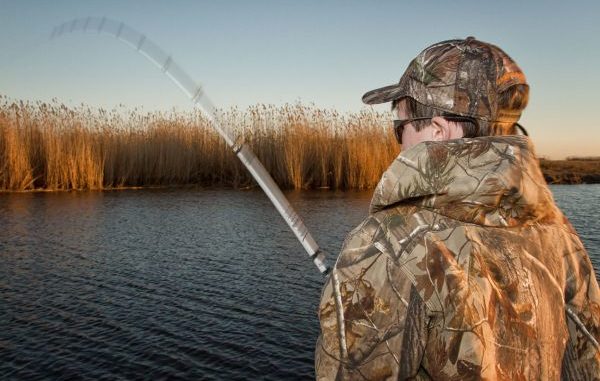
What good would a small mud boat be if you didn’t know how to catch fish once you got away from everybody else by crossing a shallow flat?
According to LaCoste, the great thing about fishing low water is that any deep water that is left holds copious amounts of fish.
“You may have only have a couple feet of water, but that is deep water if everything else around you is one foot or less,” he said. “It might only be 1 foot — it doesn’t matter. Wherever the deeper water is the trout and reds will be there too.”
For LaCoste, fishing these holes is as simple as fan casting around his boat until he gets a bite, upon which time he deploys his Power-Pole shallow water anchor system and fishes until the bite runs out.
“Most of the time, the bite dying is simply a matter of the fish moving around a little bit,” LaCoste continued. “Just pick up your anchor and drift forward a little bit, and you’ll often find them again.”
LaCoste insisted that his Power-Pole is a key component of fishing such shallow water because it keeps him from blowing up on a pile of fish and spooking them.
“When the water is so shallow, any little mistake you make is amplified,” he said. “So the best thing to do is stop and make as little commotion as possible.”
Down in DuLarge, trout don’t seem to like baits bounced off the bottom. Rather, LaCoste gets most of his bites by swimming his Matrix Shads back in with a steady retrieve.
“And this time of year, the bite is often so subtle that it’s hard to feel,” he went on. “The way I try to explain it to people is that they’ve got to set the hook as soon as they feel that little thump, which can be hardly perceptible.”
LaCoste put on a clinic by reeling in one trout after another, while his son, Seth, my son Matthew and I could only wonder what we were doing wrong.
“I know what I’m feeling for, and I can hardly tell when I’m getting bit,” I told him.
“Braided line is important,” he told me. “When you straight pull a bait with braided line and you set the hook as soon as you feel the bite, you’ll catch him. If you think you’re going to wait until he’s got it better, he’ll be gone by the time you jerk.”
Redfish are a different story. LaCoste said they are easy to spot cruising the banks when the water is so low.
“They pull out of those ponds when the water gets low, and they’ll literally stack up by the hundreds in any deeper water they can find,” LaCoste concluded. “Finding them pushing in shallow water when there are so many is a no brainer.”
